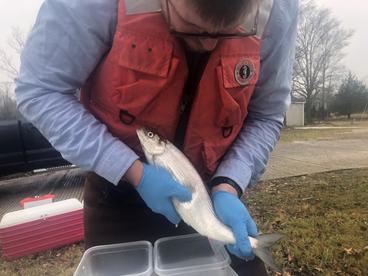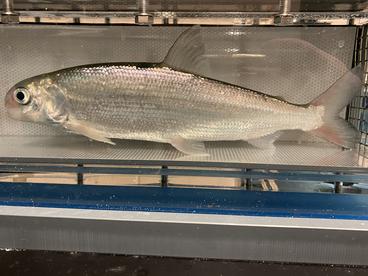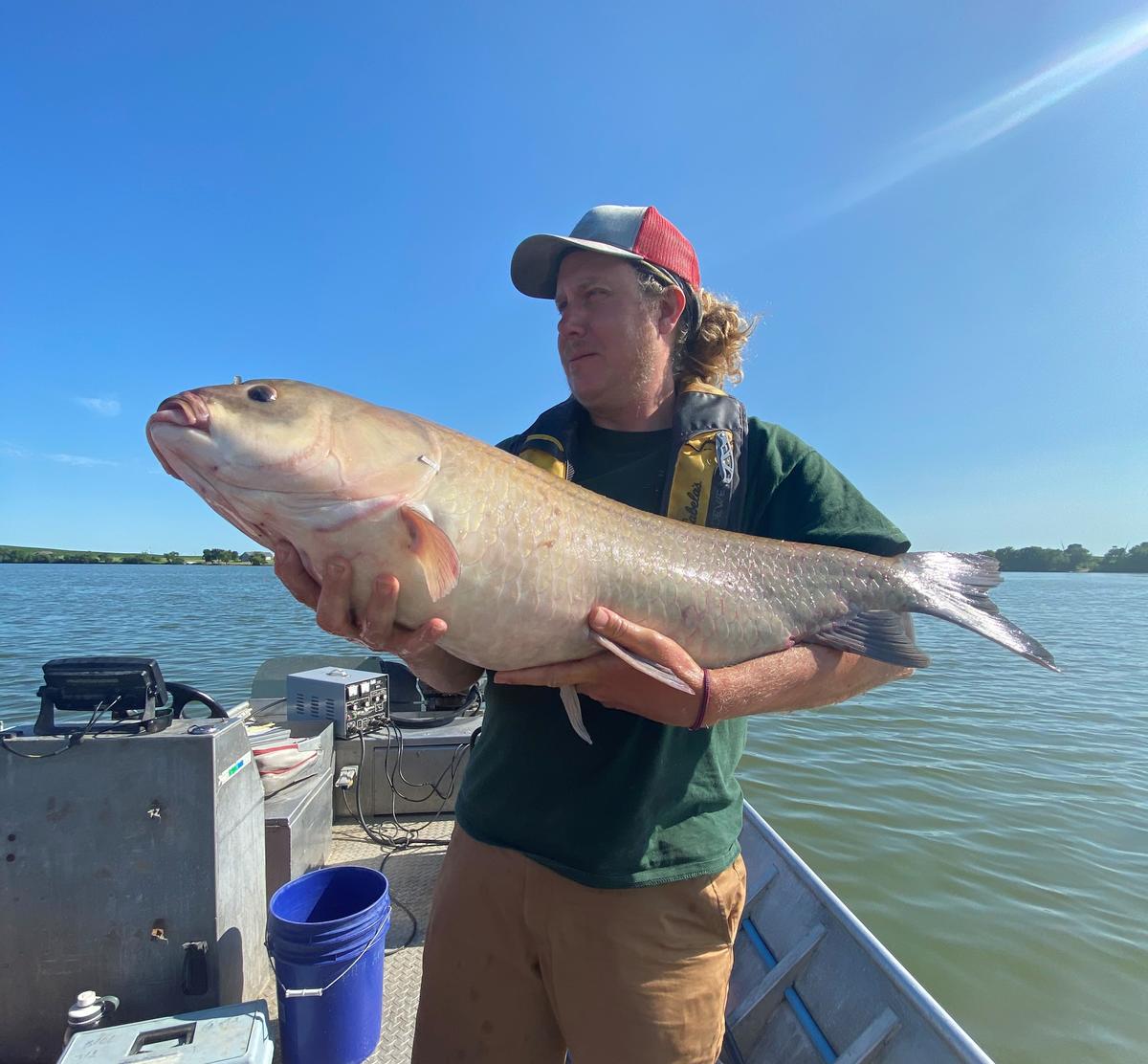
By Marty Simonson, MW CASC Graduate Student
Standing on the shoreline of the Great Lakes, it’s hard to imagine that the lakes and the resources within could be exhaustible. The view that the region was limitless was certainly the predominant train of thought during the beginning of European colonization across the Great Lakes Basin. However, just as a greater number of species and forms of fishes were being described and identified in the Great Lakes, declines in native fish stocks from overfishing, pollution, and invasive species led to catastrophic changes to Great Lakes ecosystems. Loss of species diversity weakens an ecosystem’s potential to resist changes from disturbances, and ecosystem services humans rely on are more likely to be disrupted. While this part of the story may be familiar to most readers, the history of Great Lakes coregonines (lake whitefish, cisco or lake herring, and others) was new to me as I embarked on my MW CASC research project.
In the early 20th century, there was substantial effort to identify forms and subspecies within the coregonine family. While Lakes Michigan and Huron historically held the greatest number of coregonine species and Lake Erie supported the largest freshwater fishery in the world, substantial coregonine losses occurred during the mid-20th century. Today, cisco are considered functionally extirpated from Lake Erie and only a few remnant populations exist in Lakes Huron and Michigan. However, the number of coregonine species and forms historically described is a testament to their diversity and high potential to adapt to a variety of ecosystems. Currently, Lake Superior has the greatest coregonine abundance and diversity, but remnant populations exist in the rest of the Great Lakes as well, suggesting that not all is lost.

Changes to the Great Lakes after the coregonine populations collapsed, and subsequent management to restrict nutrient loading, invasive species, and commercial fishing, have led to habitat restoration throughout the Great Lakes, including niches where coregonines once thrived. Restoration efforts and adaptive management programs are underway to support and maintain coregonine populations in the Great Lakes. My MW CASC research involves measuring the metabolism and heat tolerance of two distinct cisco populations to test if a southern population from a warmer inland lake can tolerate increased water temperatures relative to cisco from northern Lake Huron. My research will help inform restoration efforts for cisco in habitats expected to warm in the future due to climate change like shallow bays and the southern Great Lakes.
While restoration of coregonines can directly support commercial and recreational fisheries, a key component to ecosystem resilience is species diversity. Thus, conservation and restoration are important for maintaining ecosystem processes and services that humans rely on as climate change forces regime shifts in biotic and abiotic components of Great Lakes ecosystems. Coregonines may be more adaptable to changing habitats relative to other species, facilitating management objectives focused on maintaining species diversity in the Great Lakes, which in turn supports commercial and recreational fisheries and sustainable use of a renewable natural resource.
 | Marty Simonson (he/him/his) is a term biologist with the USGS Great Lakes Science Center in Ann Arbor, Michigan. Marty’s research interests involve Great Lakes fish population dynamics, restoration ecology, and habitat use in the context of climate change. |
